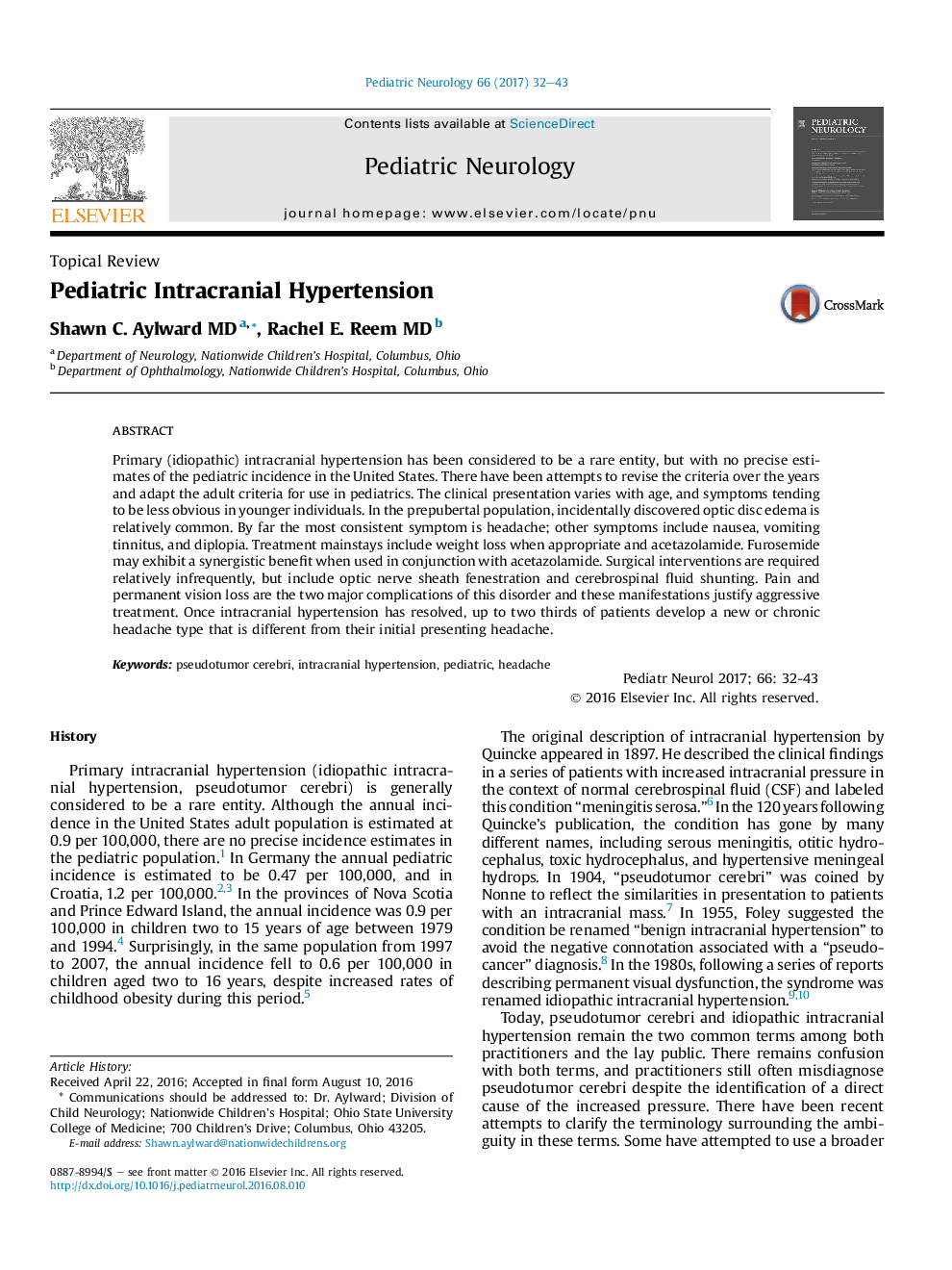| Article ID | Journal | Published Year | Pages | File Type |
|---|---|---|---|---|
| 5633041 | Pediatric Neurology | 2017 | 12 Pages |
Primary (idiopathic) intracranial hypertension has been considered to be a rare entity, but with no precise estimates of the pediatric incidence in the United States. There have been attempts to revise the criteria over the years and adapt the adult criteria for use in pediatrics. The clinical presentation varies with age, and symptoms tending to be less obvious in younger individuals. In the prepubertal population, incidentally discovered optic disc edema is relatively common. By far the most consistent symptom is headache; other symptoms include nausea, vomiting tinnitus, and diplopia. Treatment mainstays include weight loss when appropriate and acetazolamide. Furosemide may exhibit a synergistic benefit when used in conjunction with acetazolamide. Surgical interventions are required relatively infrequently, but include optic nerve sheath fenestration and cerebrospinal fluid shunting. Pain and permanent vision loss are the two major complications of this disorder and these manifestations justify aggressive treatment. Once intracranial hypertension has resolved, up to two thirds of patients develop a new or chronic headache type that is different from their initial presenting headache.
